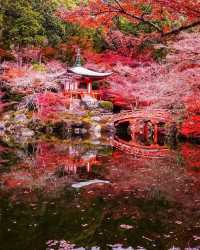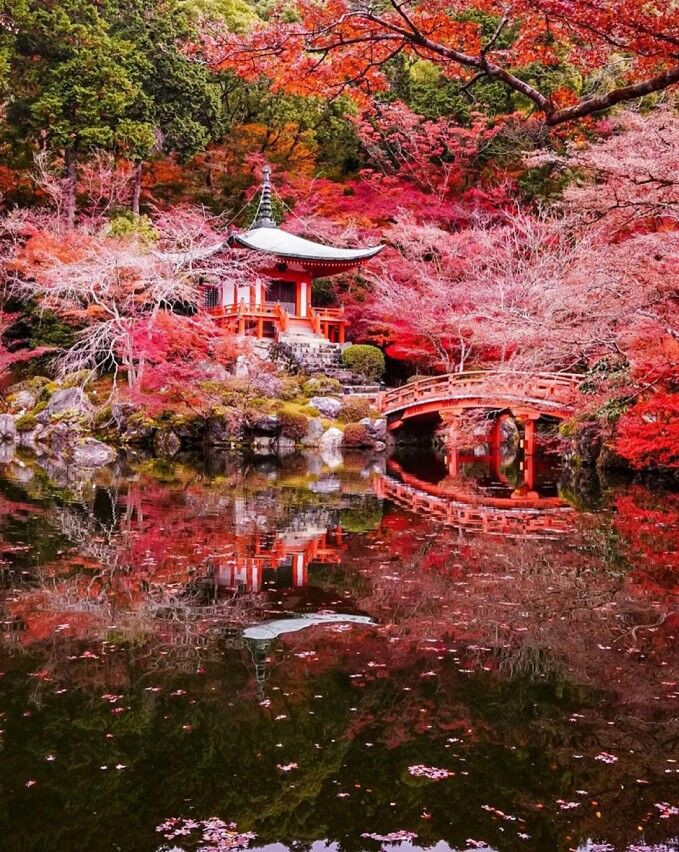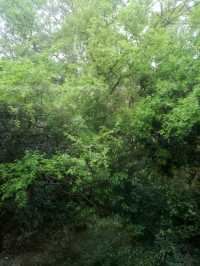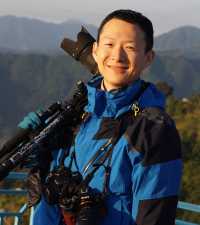The temple is located in Fushimi District, Kyoto City, Japan. It is the main temple of the Japanese Buddhist True-Yan Zongyu sect. It was listed as a World Heritage Site in 1994. The temple is large and divided into three parts. The temple is decorated in gold and red in autumn. Outdoor elegance!
;
Daigo-ji Temple Review
4.6 /5160 Reviews
Popular Destinations
Bandar Seri Begawan Travel | Jiuzhaigou Travel | Shenzhen Travel | Nagoya Travel | Jinan Travel | Kunming Travel | Xishuangbanna Travel | Labuan Bajo Travel | Petaling Jaya Travel | Guiyang Travel | Cebu Travel | Jieyang Travel | Tanjung Bungah Travel | Yogyakarta Travel | Hong Kong Travel | Palawan Travel | Kemi Travel | Wanzhou District Travel | Siguniang Mountain Travel | Anchorage Travel | Sullivan County Travel | Riyadh Travel | Criccieth Travel | North Hwanghae Travel | Gladstone Travel | Moose Jaw Travel | Chiba Prefecture Travel | Denver Travel | Side Travel | Spata Loutsa Travel
Recommended Attractions at Popular Destinations
Bangkok attraction near me | Tokyo attraction near me | Manila attraction near me | Hong Kong attraction near me | Seoul attraction near me | Taipei attraction near me | Los Angeles attraction near me | New York attraction near me | Shanghai attraction near me | Kuala Lumpur attraction near me | Shenzhen attraction near me | Osaka attraction near me | Singapore attraction near me | London attraction near me | Guangzhou attraction near me | San Francisco attraction near me | Beijing attraction near me | Macau attraction near me | Bali attraction near me | Paris attraction near me | Orlando attraction near me | Jakarta attraction near me | Ho Chi Minh City attraction near me | Chicago attraction near me | Phuket attraction near me | Toronto attraction near me | Cebu attraction near me | Dallas attraction near me | Istanbul attraction near me | Seattle attraction near me
Popular Attractions
Fairy Mountain National Forest Park | Adventure Cove Waterpark | Nanyang Technological University | Disneyland Paris | Adventure Waterpark Desaru Coast | Chengdu Research Base of Giant Panda Breeding | Sunway Lagoon Theme Park | Statue of Liberty | Gankeng Hakka Town | Dujiangyan Irrigation System | Tsim Sha Tsui | Hong Kong Disneyland | Tianmen Mountain | Nanxun Ancient Town | Pudacuo National Park | Hounon Ridge Farmstay & Camping | Hep Five Ferris wheel | Tang Paradise | Crystal City of Donghai | Crystal Falls | L'Îlot Galerie -Laurence Gallien | Arulmigu Sri Mutharamman Temple | BLESSED IWENE TANSI PARISH UMUDIOKA ANAMBRA | Bulbule Park | Centro Culturale Massimiliano Kolbe | Mill Creek Trail | Catarata Las Trillizas | Madina Masjid | Plaza de Sondor | Universal Orlando Resort
Popular Travelogues
Bangkok Travelogue | Tokyo Travelogue | Hong Kong Travelogue | Seoul Travelogue | Los Angeles Travelogue | New York Travelogue | Shanghai Travelogue | Kuala Lumpur Travelogue | Shenzhen Travelogue | Osaka Travelogue | Singapore Travelogue | London Travelogue | Guangzhou Travelogue | San Francisco Travelogue | Beijing Travelogue | Macau Travelogue | Bali Travelogue | Paris Travelogue | Orlando Travelogue | Ho Chi Minh City Travelogue | Chicago Travelogue | Phuket Travelogue | Toronto Travelogue
Popular Ranked Lists
Top 4 Premium Hotels in South Sumatra | Popular Family-friendly Attractions Near Qianguo | Top 20 Local Restaurants in Zhangjiajie | Popular Premium Hotels in Pythagoreio | Top 6 Fine Dining in Taizhou | Top 4 Premium Hotels in Fuzhou | Top 6 Luxury Hotels in Changzhou | Popular Luxury Hotels Near Arkadii | Popular Luxury Hotels Near Chamonix-Mont-Blanc | Top 6 Premium Hotels in Fenghuang | Top 4 Premium Hotels in Kigali | Popular Family-friendly Attractions Near Shibing | Popular Family-friendly Attractions Near Hualong | Popular Family-friendly Attractions Near Heqing | Popular Nightlife Districts in Phuket | Popular Family-friendly Attractions Near Shidian | Popular Family-friendly Attractions Near Zhuozhou | Top 13 Fine Dining in Florence | Popular Premium Hotels in Gaoyou | Popular Nightlife Districts in Dublin | Popular Nightlife Districts in Taipei | Popular Nightlife Districts in Jinghong | Popular Nightlife Districts in Changsha | Top 4 Nightlife Districts in Osaka | Popular Nightlife Districts in Pattaya | Popular Nightlife Districts in Phuket | Popular Nightlife Districts in Beijing | Popular Nightlife Districts in Kaohsiung | Popular Nightlife Districts in Shanghai
Payment Methods
Our Partners
Copyright © 2024 Trip.com Travel Singapore Pte. Ltd. All rights reserved
Site Operator: Trip.com Travel Singapore Pte. Ltd. Travel License No. 02943
Site Operator: Trip.com Travel Singapore Pte. Ltd. Travel License No. 02943

















